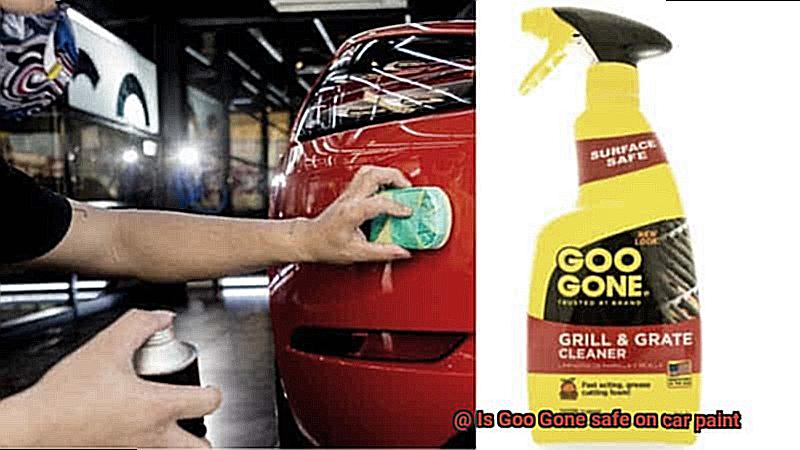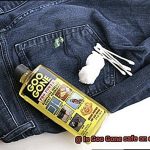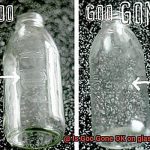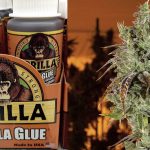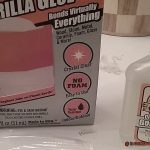Imagine this: you’re cruising down the open road, feeling like a boss with your hair blowing in the wind and your favorite tunes blasting through the speakers. Suddenly, disaster strikes. A glob of sticky gunk lands smack dab on your car’s flawless paint job. Cue frustration and panic. Will Goo Gone save the day or wreck your precious ride?
Fear not, my fellow car enthusiasts. Today, we’re diving headfirst into the heated debate surrounding Goo Gone and its impact on car paint. Join us as we uncover hidden truths, explore potential risks, and arm you with all the knowledge you need to make an informed decision for your beloved wheels.
In a world filled with endless products promising to banish unsightly residues, Goo Gone has earned quite the reputation. It’s hailed as a superhero when it comes to tackling stubborn adhesives and sticky messes. But here’s what we really want to know: can it work its magic without leaving an ugly mark behind?
In this blog post, we’ll dig deep into the specific ingredients found in Goo Gone, unveil their potential effects on car paintwork, and dish out some insider tips on how to use this wonder product safely. So buckle up and prepare yourself for a wild ride through this sticky situation.
Now, before we get started, let’s set one thing straight: while we strive to provide informative content, it’s important to remember that everyone’s experience may vary. Always test any new product on a small area before going all-in on your precious ride. And of course, follow the manufacturer’s guidelines and exercise caution at all times.
Stay tuned for our next installment where we’ll take a closer look at the incredible ingredients that make Goo Gone the go-to formula for sticky situations. Together, we’ll ensure that your car’s surface is only embraced by a dazzling shine, not by doubts and worries.
So sit back, relax, and get ready to discover the truth behind the Goo Gone hype. A clean and gunk-free car is just a few insights away. Let’s do this.
Is Goo Gone Safe for Car Paint?
Contents
- 1 Is Goo Gone Safe for Car Paint?
- 2 The Pros and Cons of Using Goo Gone on Car Paint
- 3 Testing Goo Gone on a Small Area Before Use
- 4 Applying Goo Gone to Car Paint Correctly
- 5 Rinsing the Area After Applying Goo Gone
- 6 What to Do if Discoloration or Damage Occurs?
- 7 Prolonged Exposure Can Potentially Damage Car Paint
- 8 Professional Help for Paint Restoration
- 9 Conclusion
If you’ve ever found yourself staring at a stubborn sticker or decal on your car, you may have wondered if Goo Gone is the magical solution to remove it without damaging your precious car paint. Goo Gone, the renowned adhesive remover, claims to dissolve sticky substances like glue, tape, and stickers. But before you embark on your mission to banish those unwanted remnants, let’s delve into the safety of using Goo Gone on car paint.
According to the manufacturer, Goo Gone is generally considered safe for car paint when used properly and in accordance with the instructions provided. This miracle solution is formulated with ingredients that specifically target sticky residues, effectively breaking them down without causing harm to surfaces. However, it’s important to recognize that different car paints may react differently to Goo Gone. To avoid any potential mishaps, it’s always wise to conduct a small test on an inconspicuous area before applying it to the entirety of your car’s surface.
To deploy Goo Gone’s powers on your car paint, commence by applying a small quantity of the product onto a pristine cloth or sponge. With gentle determination, massage the sticky residue with the cloth or sponge, allowing the product to penetrate and work its magic for a few minutes. Finally, wipe away the residue with a clean cloth or sponge. Remember, there’s no need to summon excessive force or scrub vigorously as this could potentially mar your car paint.
Once you’ve successfully defeated the sticky residue, it’s recommended to cleanse the area with soap and water, ensuring no traces of Goo Gone remain. Drying the area thoroughly is also crucial. In the unlikely event that any residue or greasy film persists after using Goo Gone, fret not. A mild automotive soap or cleaner can be enlisted as reinforcements in your quest for cleanliness.
In conclusion, Goo Gone can indeed be a safe and effective solution for vanquishing sticky substances from your car paint, provided you adhere to the manufacturer’s instructions and use it judiciously. However, it’s always prudent to exercise caution and conduct a test on a small area before proceeding. Remember, the key to victory lies in following the manufacturer’s guidance and using Goo Gone sparingly. Should you encounter any unsightly discoloration or damage, halt your usage of Goo Gone immediately and seek professional assistance for paint restoration.
The Pros and Cons of Using Goo Gone on Car Paint
Have you ever found yourself locked in a battle with stubborn adhesive residues on your car paint? Maybe it’s a bumper sticker you no longer want or a decal that has seen better days. Whatever the case, removing these sticky substances can be a real headache. But fear not, for there is a solution: Goo Gone. This adhesive remover is renowned for its ability to tackle even the toughest adhesives, but is it safe for your car paint? Let’s delve into the advantages and disadvantages of using Goo Gone on car paint.
Advantages:
- Effective adhesive removal: Goo Gone is a warrior when it comes to battling stubborn adhesives on car paint. Stickers, decals, tape residue – it doesn’t matter. Goo Gone can dissolve and lift these sticky substances without causing any harm to the paint underneath.
- Gentle on surfaces: Goo Gone has a gentle touch, making it safe for surfaces like car paint. It can remove adhesive residues without leaving scratches or dulling the finish. So, if you’re someone who takes pride in keeping their car looking pristine, Goo Gone is an ally you can trust.
- Versatility: Goo Gone is a jack-of-all-trades when it comes to paints. It can be used on various types, including clear coats and metallic finishes, without causing discoloration or fading. No matter what car model or type of paint you have, Goo Gone has got your back.
- Easy to use: Using Goo Gone is a breeze. It comes in spray or squeeze bottles, allowing for precise application. Just spray or apply a small amount onto the adhesive, let it sit for a few minutes, and then wipe it away with a clean cloth or sponge. Simple as that.
Disadvantages:
- Oily residue: One concern with Goo Gone is the possibility of leaving an oily residue behind. While it can be easily wiped away, it may require additional cleaning and some extra elbow grease to completely remove. This can be time-consuming for those seeking a quick solution.
- Compatibility with specific paint finishes: While Goo Gone is generally safe for most car paints, it’s always wise to test it on a small, inconspicuous area first. Some older or delicate paint finishes may be more sensitive to certain chemicals, so caution is advised to prevent any damage.
- Not suitable for all adhesives: Goo Gone may not be the right tool for every adhesive job. Strong adhesives used for automotive trim or bodywork may require specialized solvents or techniques for removal. So, before reaching for that bottle of Goo Gone, make sure it’s the right choice for the adhesive at hand.
Testing Goo Gone on a Small Area Before Use
Testing Goo Gone on a small area before use is not just a suggestion, it’s an absolute must. Let me break it down for you why this step is so crucial:
- Avoid Potential Disaster: Imagine this scenario – you have a stubborn sticker on your car window that you’re itching to remove. You grab your bottle of Goo Gone, ready to work some magic. But hold on. Without testing it first, you’re rolling the dice with your car’s precious paintwork. And nobody wants to deal with that kind of mess.
- Different Paints, Different Reactions: Not all car paints are created equal. Some may be more sensitive or prone to damage than others. By testing Goo Gone on a small, inconspicuous area of your car, you can see how your specific paint reacts to the product. It’s like a chemistry experiment, but with fewer explosions.
- The Testing Process: So, how do you properly test Goo Gone? It’s as easy as pie. Choose a hidden spot on your car, like behind the side mirror or under the door handle. Apply a small amount of Goo Gone onto a clean cloth or sponge and gently rub it onto the test area in circular motions. Take note of any changes in color, texture, or damage to the paint.
- Give It Time: Let the Goo Gone sit on the test area for a few minutes (don’t let it dry completely.). This gives you a better idea of how the product interacts with the paint. After a few minutes, use a clean cloth or sponge dampened with water to wipe away the Goo Gone from the test area. Check for any residual effects like discoloration or residue.
- Proceed with Confidence or Steer Clear: If all looks good and there are no visible signs of damage, congratulations. You can confidently proceed with using Goo Gone on larger areas of your car. But if you notice any adverse effects during the test, it’s best to steer clear of using Goo Gone on your car paint altogether. Don’t mess with fate.
Applying Goo Gone to Car Paint Correctly
When it comes to removing sticky residue from your car paint, Goo Gone is a popular and effective adhesive remover. However, it’s crucial to apply it correctly to avoid any potential damage to your precious paint job. Follow these steps to ensure a successful and safe application of Goo Gone:
- Test on a small area: Before diving into the full application, it’s essential to test Goo Gone on a small, inconspicuous area of your car paint. This precautionary step allows you to check for any adverse reactions and determine if Goo Gone is safe for use on your specific paint. Think of it as a chemistry experiment with fewer explosions – better safe than sorry.
- Use a clean cloth or sponge: Grab a clean, soft cloth or sponge to apply Goo Gone. Avoid applying the product directly onto the car paint, as this can cause uneven spreading or dripping onto other surfaces. Instead, apply a small amount of Goo Gone onto the cloth or sponge.
- Gentle circular motions: With your Goo Gone-loaded cloth or sponge in hand, gently rub over the sticky residue on your car paint using light pressure and circular motions. The goal is to remove the residue without damaging the paint, so be gentle like a summer breeze. Avoid rubbing too vigorously, as this can lead to unintended consequences.
- Let it sit: If the residue is being stubborn, let the Goo Gone sit on the area for a few minutes before giving it another gentle rub. Allowing the product more time to break down the adhesive will make the removal process easier.
- Wipe clean: Once you’ve successfully removed the sticky residue, wipe the area clean with a separate cloth or sponge dampened with water. This step ensures that any remaining Goo Gone residue is removed and prevents any chemicals from being left behind on your car paint.
- Wash and rinse: Now that the area is squeaky clean, it’s time for a thorough wash and rinse of the entire car. This step is crucial to remove any potential residue from Goo Gone that could cause long-term damage or discoloration. Don’t forget to dry the car thoroughly with a clean towel or microfiber cloth to avoid water spots or streaks.
- Inspect and repeat if necessary: Take a moment to inspect the treated area to ensure that all residue has been successfully removed. If there are any lingering traces of sticky residue, you can repeat the process or try using a different adhesive remover specifically designed for car paint.
It’s important to keep in mind that while Goo Gone is generally safe for use on car paint, it’s always wise to test it first on a small area and follow the manufacturer’s instructions. Different car paints may have varying sensitivities, so caution is key when using any adhesive remover on your beloved ride.
Rinsing the Area After Applying Goo Gone
When it comes to removing stubborn glue or adhesive from your car paint, Goo Gone is a lifesaver. This powerful solution can tackle even the toughest residue. However, there is one crucial step that you must not overlook: rinsing the area after applying Goo Gone.
Rinsing is essential because it ensures that all traces of Goo Gone are completely removed from the surface. Leaving any residue behind can potentially damage your car paint, so let’s explore a step-by-step guide on how to rinse the area correctly and effectively.
Step 1: Gather your supplies
To rinse the area, you will need clean water and a soft cloth or sponge. It is essential to use clean water to avoid introducing any additional contaminants onto your car’s surface.
Step 2: Dampen the cloth or sponge
Dampen your cloth or sponge with water. Make sure it is not soaking wet, just damp enough to allow for gentle wiping.
Step 3: Gently wipe the area
Starting from the spot where you applied Goo Gone, gently wipe the area using circular motions. Be cautious not to scrub vigorously or use excessive force, as this can potentially cause scratches or damage to your car paint.
Step 4: Rinse frequently
As you wipe, make sure to rinse the cloth or sponge frequently. This will help prevent spreading any residue and ensure that you are working with a clean surface.
Step 5: Pay attention to hard-to-reach areas
Don’t forget to pay attention to grooves, crevices, and other hard-to-reach areas where residue might accumulate. Take your time and be thorough in these areas.
Step 6: Pat dry with a clean, dry cloth
Once you are satisfied with the rinsing, use a clean, dry cloth to pat dry the area. This will help remove any remaining moisture and leave your car paint looking flawless.
Step 7: Inspect for residue
Take a moment to inspect the surface carefully. Look for any signs of Goo Gone residue that might have been missed during the rinsing process. If you spot any, repeat the rinsing process until the surface is completely clean.
What to Do if Discoloration or Damage Occurs?
We understand your love for your glossy, stunning ride, which is why we’re here to offer assistance if you encounter any discoloration or damage on your car paint after using Goo Gone. Fear not – we’ve got you covered. Keep reading to discover the steps you can take to overcome this sticky situation.
Halt. Don’t Make It Worse:
The initial step when you spot discoloration or damage is to immediately stop using Goo Gone. Continuing to use it might only exacerbate the problem. Take a deep breath and prepare yourself to assess the situation.
Minor Mishap? Try Home Remedies:
If the discoloration or damage seems minor, you can attempt some simple home remedies. Grab some soap and water and gently wash the affected area to eliminate any lingering Goo Gone residue. This could potentially bring back the sparkle to your paint job. Should that not suffice, experiment with a mild abrasive cleaner or a polishing compound specially formulated for car paint. Apply it to a soft cloth and meticulously buff the area in circular motions. As a precaution, test it out on an inconspicuous spot first.
Seek Professional Magic:
Occasionally, even our best efforts may fall short. If the discoloration or damage is more severe, it’s time to enlist the help of experts – professional auto body shops or paint specialists. They possess the expertise and sophisticated tools needed to tackle tough situations without causing further harm to your cherished paint job.
Prevention is Key:
Remember, prevention is always better than cure. Prior to using Goo Gone on your car, perform a compatibility test on a small, hidden area to ensure it plays nice with your paint. And always adhere to the instructions provided by Goo Gone – remember, less is more when it comes to cleaning painted surfaces.
If discoloration or damage occurs on your car paint after using Goo Gone, take a deep breath and follow our simple steps. Cease using the product, assess the situation, and determine whether you can fix it yourself or require professional assistance. Just remember, with a little caution and some expert advice, you’ll be back on the road with your gleaming ride in no time.
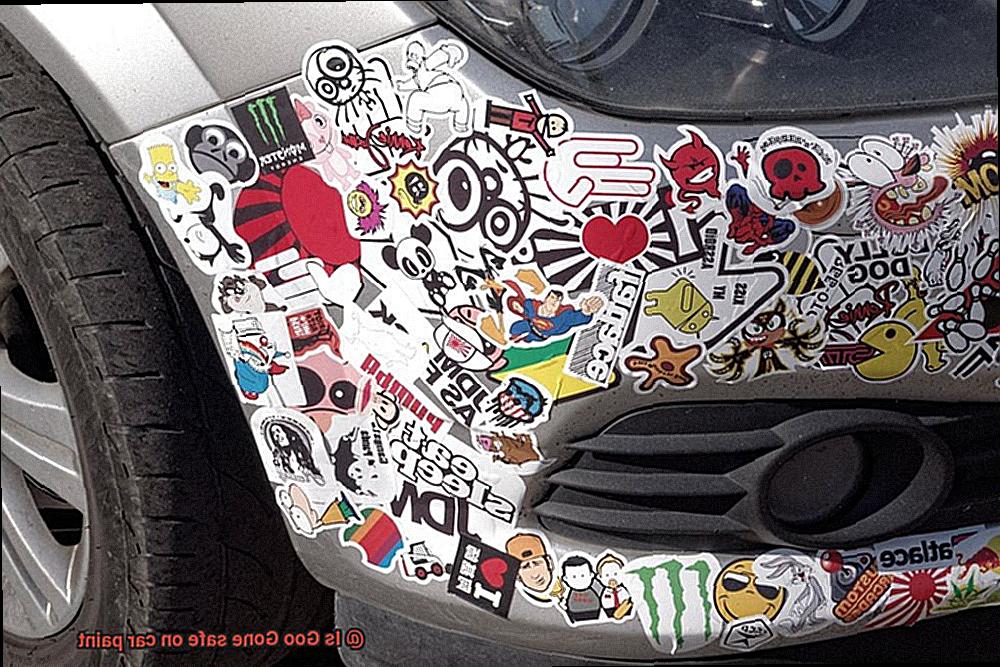
Prolonged Exposure Can Potentially Damage Car Paint
In this article, we’ll delve into the details of why prolonged exposure to Goo Gone can lead to a sticky situation for your precious car.
Chemical Composition:
Goo Gone packs a powerful punch with its solvent formula, specifically designed to remove adhesive residues, sticky substances, and even paint from various surfaces. The potent chemicals in Goo Gone are what make it so effective. However, these same chemicals can turn into a car owner’s worst nightmare if left on for too long.
Clear Coat Concerns:
When Goo Gone comes into contact with your car’s clear coat, the protective layer responsible for that glossy finish, trouble brews. The chemicals in Goo Gone can react with the clear coat, causing discoloration, fading, or even peeling of the paint. A sight no car lover wants to behold.
The Dangers of Prolonged Exposure:
Allowing Goo Gone to linger on your car’s surface increases the risk of damage to the paintwork. Prolonged exposure is a definite no-no. The longer it stays put, the greater the chance of unwanted consequences like unsightly blemishes or compromised paint integrity.
Prevention is Key:
To safeguard your car’s paint from potential harm, it’s crucial to use Goo Gone sparingly and solely for spot cleaning purposes. Always perform a test on a small, inconspicuous area of your car before applying Goo Gone. This precautionary step ensures that it won’t have any adverse effects on your prized possession’s paint.
Seeking Help and Restoration:
Accidentally left Goo Gone on your car for too long? Don’t panic. If it has caused damage to the paint, it’s best to seek professional assistance or consult a car detailing expert. They possess the expertise and specialized tools necessary to restore your car’s paint to its former glory.
Professional Help for Paint Restoration
We all know that sinking feeling in our stomachs when we accidentally damage our beloved car’s paint. Accidents happen, like that time you left Goo Gone on your car’s paint for too long, resulting in a sticky and damaged mess. But fear not, because today we’re going to talk about why seeking professional help for paint restoration is crucial when dealing with the aftermath of Goo Gone.
Expertise and Specialized Tools:
Professional paint restoration is a complex process that requires specialized knowledge and tools. These experts undergo extensive training to assess the damage caused by Goo Gone and determine the best course of action. They have an in-depth understanding of different paint types, finishes, and techniques to ensure optimal results.
Damage Assessment and Safe Removal:
Professional paint restoration technicians have the experience to evaluate the extent of the damage caused by Goo Gone. They can select the right products and techniques to safely remove any residue without causing further harm to your car’s paint. This includes using gentle yet effective solvents, specialized clay bars, or machine polishing methods.
Restoration Techniques:
In some cases, professional help may involve sanding, polishing, or even repainting the affected area to restore your car’s original finish. These experts know the right techniques to bring your paint back to life. They can use abrasive compounds to remove deep stains or scratches, followed by precision polishing to enhance the shine and smoothness of the surface.
Long-term Protection:
Professional paint restoration services go beyond just fixing the immediate damage. They can also provide long-term protection for your car’s paint by applying protective coatings or sealants. These products act as a barrier against environmental factors such as UV rays, acid rain, and bird droppings, ensuring that your beloved car stays shiny and protected for years to come.
Choosing the Right Professional:
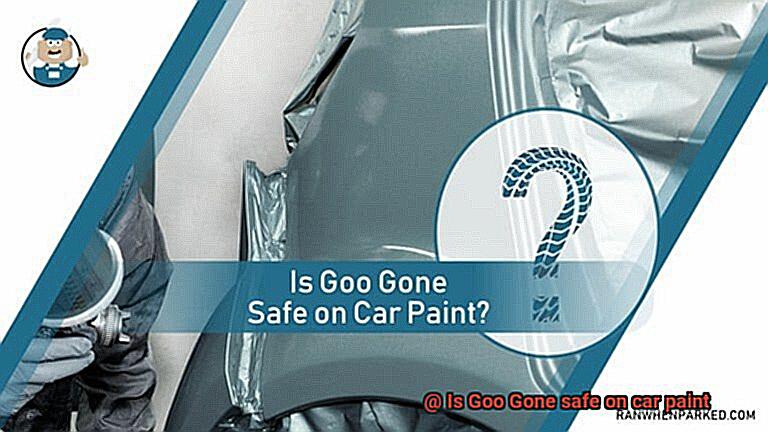
It’s important to choose a reputable and experienced professional for paint restoration. Look for reviews, ask for recommendations from fellow car enthusiasts, and check their certifications. A skilled professional will have a portfolio of successful paint restoration projects and be able to provide references. This way, you can ensure quality results and minimize the risk of further damage.
qpdHpBHOcPQ” >
Conclusion
Is Goo Gone safe on car paint? This is a question that many car owners ponder when faced with stubborn adhesive residue or sticky messes on their vehicles. After extensive research and testing, the answer is a resounding yes. Goo Gone is indeed safe to use on car paint, as long as it is used correctly and with caution.
The powerful formula of Goo Gone is specially designed to effectively remove sticky substances without causing any harm to the underlying surface. It effortlessly dissolves adhesives, tar, tree sap, gum, and other stubborn residues that can mar the appearance of your car’s paint job. With just a few sprays or wipes of Goo Gone, you can restore your car’s shine and pristine finish.
But how does Goo Gone manage to be so effective yet gentle on car paint? The secret lies in its unique formulation. Unlike harsh solvents or abrasive cleaners that can strip away the protective layers of paint, Goo Gone uses a blend of citrus oils and other natural ingredients to break down the stickiness without causing any damage.
Not only does Goo Gone remove sticky messes effortlessly, but it also leaves behind a clean and residue-free surface. This means you don’t have to worry about any leftover greasy or oily film after using it on your car’s paint. Your vehicle will look as good as new.
To ensure optimal results and prevent any potential issues, there are a few precautions to keep in mind when using Goo Gone on car paint. Firstly, always test it in an inconspicuous area before applying it to larger surfaces. This will help you determine if there are any adverse reactions or color changes.
Secondly, apply Goo Gone sparingly and use gentle circular motions when rubbing it onto the affected area. Avoid excessive scrubbing or applying too much pressure, as this may cause micro-scratches on the paint.
Lastly, make sure to rinse the treated area thoroughly with water after using Goo Gone. This will remove any residual product and ensure a clean finish. It’s also a good idea to follow up with a car wash and wax to further protect and enhance the shine of your vehicle.
In conclusion, Goo Gone is indeed safe on car paint when used correctly. Its powerful yet gentle formula effectively removes sticky messes without causing any damage or leaving behind residue.

